4-(2-Hydroxyethyl)benzonitrile
Modify Date: 2024-01-03 07:15:19
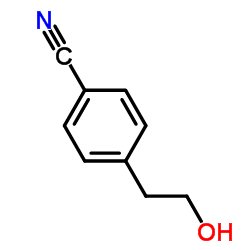
4-(2-Hydroxyethyl)benzonitrile structure
|
Common Name | 4-(2-Hydroxyethyl)benzonitrile | ||
|---|---|---|---|---|
| CAS Number | 69395-13-7 | Molecular Weight | 147.174 | |
| Density | 1.1±0.1 g/cm3 | Boiling Point | 300.2±25.0 °C at 760 mmHg | |
| Molecular Formula | C9H9NO | Melting Point | 50-51°C | |
| MSDS | USA | Flash Point | 135.3±23.2 °C | |
| Name | 4-(2-Hydroxyethyl)Benzonitrile |
|---|---|
| Synonym | More Synonyms |
| Density | 1.1±0.1 g/cm3 |
|---|---|
| Boiling Point | 300.2±25.0 °C at 760 mmHg |
| Melting Point | 50-51°C |
| Molecular Formula | C9H9NO |
| Molecular Weight | 147.174 |
| Flash Point | 135.3±23.2 °C |
| Exact Mass | 147.068420 |
| PSA | 44.02000 |
| LogP | 0.80 |
| Vapour Pressure | 0.0±0.7 mmHg at 25°C |
| Index of Refraction | 1.559 |
Synonym: Section 2 - COMPOSITION, INFORMATION ON INGREDIENTS
Risk Phrases: 20/21/22 Section 3 - HAZARDS IDENTIFICATION EMERGENCY OVERVIEW
Harmful by inhalation, in contact with skin and if swallowed.Moisture sensitive. Potential Health Effects Eye: May cause eye irritation. Skin: May cause skin irritation. Harmful if absorbed through the skin. Ingestion: Harmful if swallowed. May cause irritation of the digestive tract. Inhalation: Harmful if inhaled. May cause respiratory tract irritation. Chronic: Not available. Section 4 - FIRST AID MEASURES Eyes: Flush eyes with plenty of water for at least 15 minutes, occasionally lifting the upper and lower eyelids. Get medical aid. Skin: Get medical aid. Flush skin with plenty of water for at least 15 minutes while removing contaminated clothing and shoes. Ingestion: Get medical aid. Wash mouth out with water. Inhalation: Remove from exposure and move to fresh air immediately. If not breathing, give artificial respiration. If breathing is difficult, give oxygen. Get medical aid. Notes to Physician: Section 5 - FIRE FIGHTING MEASURES General Information: As in any fire, wear a self-contained breathing apparatus in pressure-demand, MSHA/NIOSH (approved or equivalent), and full protective gear. Extinguishing Media: Use foam, dry chemical, or carbon dioxide. Section 6 - ACCIDENTAL RELEASE MEASURES General Information: Use proper personal protective equipment as indicated in Section 8. Spills/Leaks: Vacuum or sweep up material and place into a suitable disposal container. Section 7 - HANDLING and STORAGE Handling: Avoid breathing dust, vapor, mist, or gas. Avoid contact with skin and eyes. Storage: Store in a cool, dry place. Store in a tightly closed container. Store under nitrogen. Section 8 - EXPOSURE CONTROLS, PERSONAL PROTECTION Engineering Controls: Use adequate ventilation to keep airborne concentrations low. Exposure Limits CAS# 69395-13-7: Personal Protective Equipment Eyes: Not available. Skin: Wear appropriate protective gloves to prevent skin exposure. Clothing: Wear appropriate protective clothing to prevent skin exposure. Respirators: Follow the OSHA respirator regulations found in 29 CFR 1910.134 or European Standard EN 149. Use a NIOSH/MSHA or European Standard EN 149 approved respirator if exposure limits are exceeded or if irritation or other symptoms are experienced. Section 9 - PHYSICAL AND CHEMICAL PROPERTIES Physical State: Solid Color: pale yellow Odor: Not available. pH: Not available. Vapor Pressure: Not available. Viscosity: Not available. Boiling Point: 116 - 118 deg C @0.5mmHg Freezing/Melting Point: Not available. Autoignition Temperature: Not available. Flash Point: Not available. Explosion Limits, lower: Not available. Explosion Limits, upper: Not available. Decomposition Temperature: Solubility in water: Specific Gravity/Density: Molecular Formula: C9H9NO Molecular Weight: 147 Section 10 - STABILITY AND REACTIVITY Chemical Stability: Not available. Conditions to Avoid: Incompatible materials, exposure to moist air or water. Incompatibilities with Other Materials: Acids, bases, oxidizing agents, reducing agents. Hazardous Decomposition Products: Hydrogen cyanide, nitrogen oxides, carbon monoxide, carbon dioxide. Hazardous Polymerization: Has not been reported Section 11 - TOXICOLOGICAL INFORMATION RTECS#: CAS# 69395-13-7 unlisted. LD50/LC50: Not available. Carcinogenicity: 4-(2-Hydroxyethyl)benzonitrile - Not listed by ACGIH, IARC, or NTP. Section 12 - ECOLOGICAL INFORMATION Section 13 - DISPOSAL CONSIDERATIONS Dispose of in a manner consistent with federal, state, and local regulations. Section 14 - TRANSPORT INFORMATION IATA Shipping Name: NITRILES, SOLID, TOXIC, N.O.S.* Hazard Class: 6.1 UN Number: 3276 Packing Group: III IMO Shipping Name: NITRILES, TOXIC, N.O.S. Hazard Class: 6.1 UN Number: 3276 Packing Group: III RID/ADR Shipping Name: NITRILES, TOXIC, N.O.S. Hazard Class: 6.1 UN Number: 3276 Packing group: III Section 15 - REGULATORY INFORMATION European/International Regulations European Labeling in Accordance with EC Directives Hazard Symbols: XN Risk Phrases: R 20/21/22 Harmful by inhalation, in contact with skin and if swallowed. Safety Phrases: S 36/37 Wear suitable protective clothing and gloves. WGK (Water Danger/Protection) CAS# 69395-13-7: No information available. Canada None of the chemicals in this product are listed on the DSL/NDSL list. CAS# 69395-13-7 is not listed on Canada's Ingredient Disclosure List. US FEDERAL TSCA CAS# 69395-13-7 is not listed on the TSCA inventory. It is for research and development use only. SECTION 16 - ADDITIONAL INFORMATION N/A |
| Hazard Codes | Xn: Harmful; |
|---|---|
| Risk Phrases | R20/21/22 |
| Safety Phrases | S26-S36/37/39 |
| RIDADR | 3439 |
| Packaging Group | III |
| Hazard Class | 6.1 |
| HS Code | 2926909090 |
|
~% 
4-(2-Hydroxyeth... CAS#:69395-13-7 |
| Literature: Chernyak, Natalia; Buchwald, Stephen L. Journal of the American Chemical Society, 2012 , vol. 134, # 43 p. 18147 - 18147,1 |
|
~% 
4-(2-Hydroxyeth... CAS#:69395-13-7 |
| Literature: Journal of the American Chemical Society, , vol. 134, # 30 p. 12466 - 12469 |
|
~% 
4-(2-Hydroxyeth... CAS#:69395-13-7 |
| Literature: Helvetica Chimica Acta, , vol. 64, # 5 p. 1688 - 1703 |
|
~% 
4-(2-Hydroxyeth... CAS#:69395-13-7 |
| Literature: Helvetica Chimica Acta, , vol. 64, # 5 p. 1688 - 1703 |
|
~% 
4-(2-Hydroxyeth... CAS#:69395-13-7 |
| Literature: Journal of the American Chemical Society, , vol. 104, # 7 p. 1937 - 1951 |
|
~% 
4-(2-Hydroxyeth... CAS#:69395-13-7 |
| Literature: Organic and Biomolecular Chemistry, , vol. 1, # 14 p. 2499 - 2505 |
|
~% 
4-(2-Hydroxyeth... CAS#:69395-13-7 |
| Literature: Helvetica Chimica Acta, , vol. 64, # 5 p. 1688 - 1703 |
|
~% 
4-(2-Hydroxyeth... CAS#:69395-13-7 |
| Literature: Pharmazie, , vol. 37, # 1 p. 13 - 16 |
| Precursor 7 | |
|---|---|
| DownStream 8 | |
| HS Code | 2926909090 |
|---|---|
| Summary | HS:2926909090 other nitrile-function compounds VAT:17.0% Tax rebate rate:9.0% Supervision conditions:none MFN tariff:6.5% General tariff:30.0% |
| 4-(2-Hydroxyethyl)benzonitrile |
| MFCD00052461 |
| Benzonitrile, 4-(2-hydroxyethyl)- |
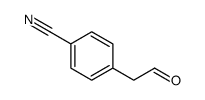
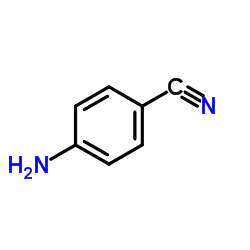
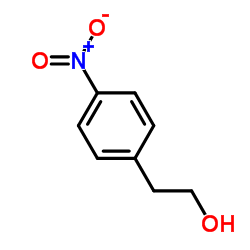
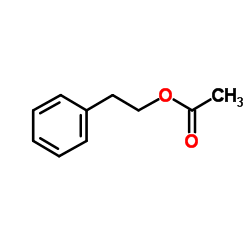

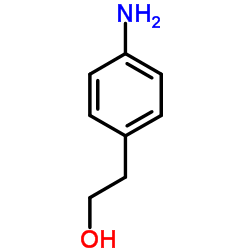


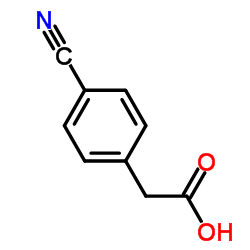 CAS#:5462-71-5
CAS#:5462-71-5 CAS#:72054-56-9
CAS#:72054-56-9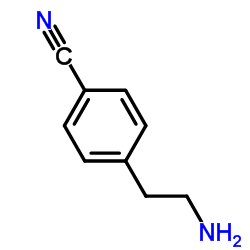 CAS#:132224-93-2
CAS#:132224-93-2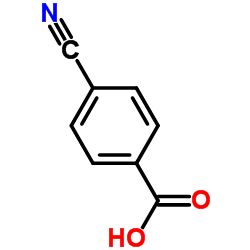 CAS#:619-65-8
CAS#:619-65-8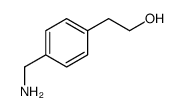 CAS#:136081-18-0
CAS#:136081-18-0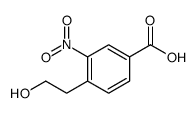 CAS#:134403-90-0
CAS#:134403-90-0![2-[4-(4,5-dihydro-1H-imidazol-2-yl)phenyl]ethanamine structure](https://www.chemsrc.com/caspic/264/714568-34-0.png) CAS#:714568-34-0
CAS#:714568-34-0
